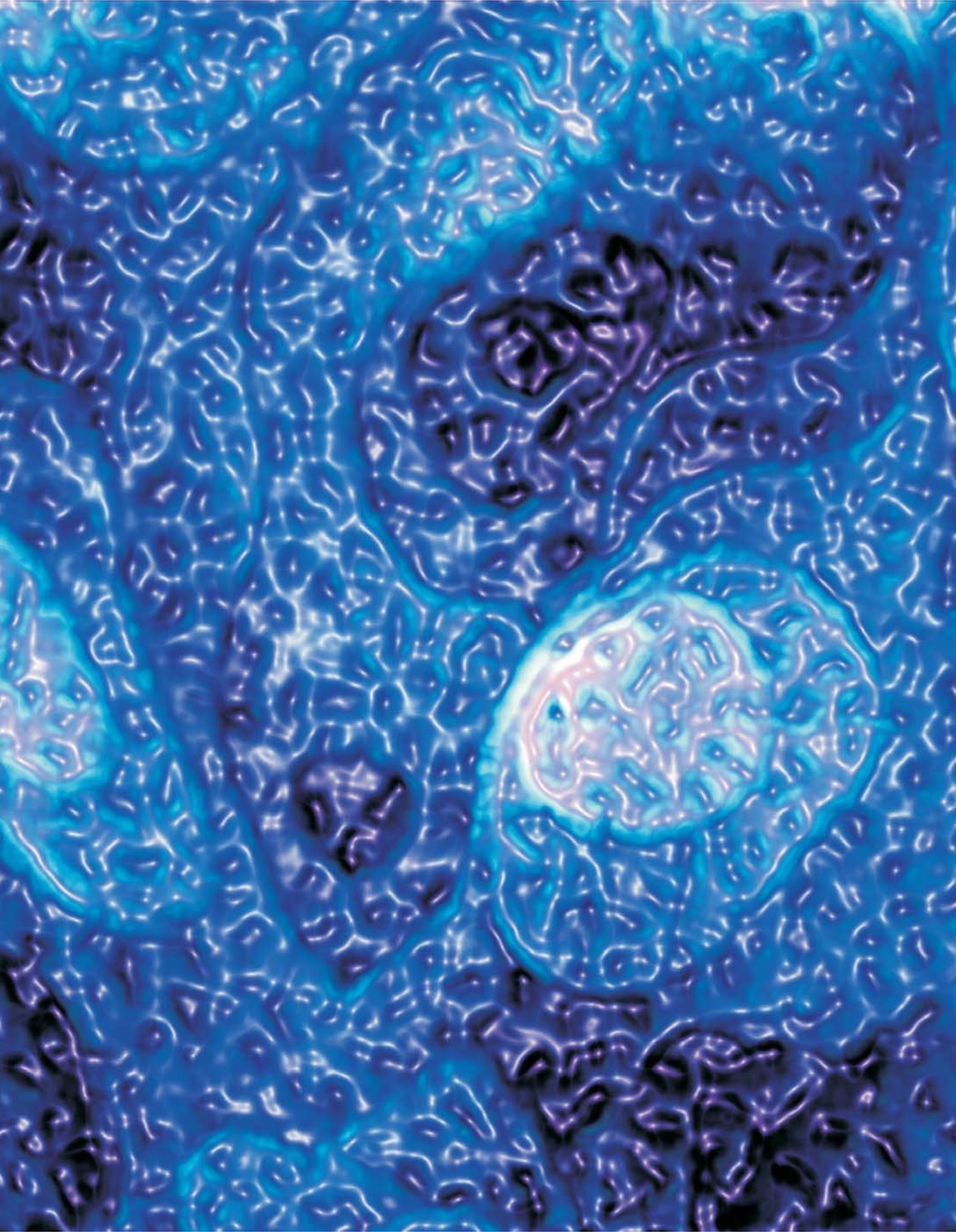Mixing up surface properties
DOI: 10.1063/1.3086115
Mixed self-assembled monolayers (SAMs) offer the intriguing possibility of tailoring wetting properties, surface energy, and other interfacial characteristics by combining suitable molecular constituents. This atomic force micrograph, 800 nm tall, shows the onset of nanoscopic phase separation in an ideally mixed two-component SAM. Upon being deposited onto a gold substrate, specially synthesized molecules containing a disulfide bond spontaneously split into two pieces, decanethiolate (C10H21S) and partially fluorinated decanethiolate (C10H4F17S). Although the two molecules are closely related chemically, they’re immiscible on the surface; the small domains of each material can be distinguished with topographic contrast because of their 2-Å length difference. The larger domains visible in the image are due to atomic terracing of the underlying gold surface. Seth Darling of Argonne National Laboratory and Steven Sibener of the University of Chicago are working to understand the stages of phase separation in such mixed SAMs to gain insights into surface-property modifications.
To submit candidate images for Back Scatter, visit http://www.physicstoday.org/backscatter.html

(Image courtesy of Seth Darling, Argonne National Laboratory; dithiol molecules synthesized by Dong-Chan Lee and Luping Yu, University of Chicago.)

